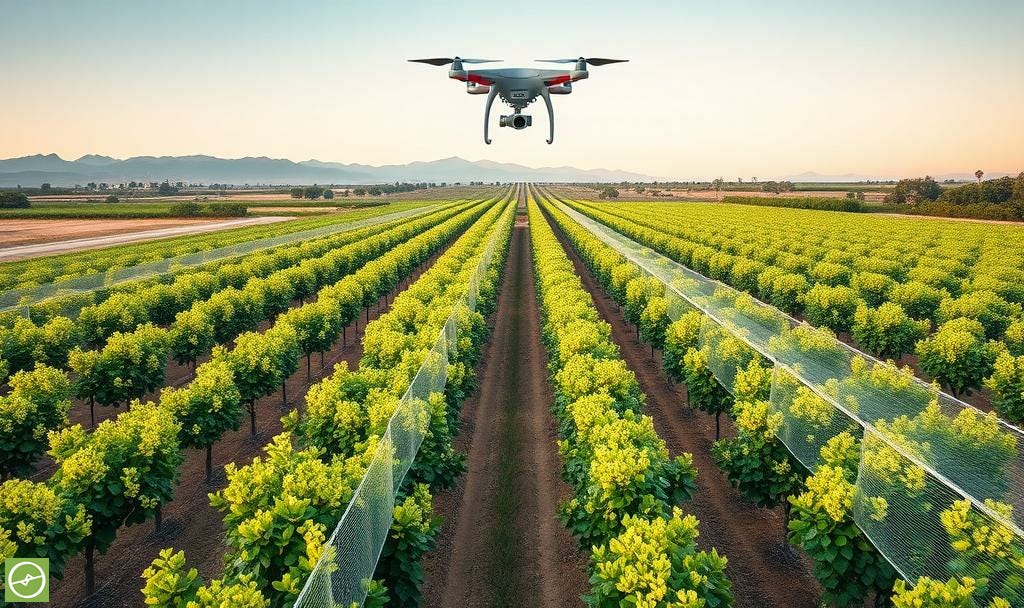Why the Future of Farming Belongs to the Agile: The Adaptation Advantage
How adaptable farmers are using plant health, precision tools, and smart strategies to stay competitive in a changing climate and global fruit market.
From macadamias to mandarins; the message is clear: Survival is no longer the benchmark. Adaptability is.
“The competition won’t be won by countries. It will be won by those who adapt.” - Rodrigo Sapiain, Fruit Production Advisor
This bold statement, originally made in the context of grape production across Chile and Peru, carries far wider relevance. Especially now. Especially in this day and age.
Farmers are under pressure… From market dynamics, to shifting climates. And from the rising cost of doing the same things they did a decade ago.
But the crops don’t care about excuses. They respond with stress, or resilience. And increasingly, the difference between the two is found not just in inputs, but in insight.
What we’re seeing across regions like Piura (Peru) and Elqui (northern Chile) is not a story of national rivalry. It’s a reminder that microclimates, soil profiles, and plant responses are local, even when trade and pricing pressures are global.
Healthy plants start with healthy soils. Consistent fruit size, sugar levels, and shelf-life are a function of much more than sunshine and good intentions.
As we push for higher yields (4,500 to 5,000 cartons per hectare in some grape operations!) the margin for error shrinks. Also, we have to remember we can’t force a plant to outperform its root system.
Technology Alone Isn’t the Answer
(But it helps the right mindset to win)
Remote sensing, drone imagery, and precision scouting aren’t silver bullets. But they are force multipliers when paired with sound agronomy and well-timed decisions.
Take crop timing, for example: Prune too early or too late, and you shift your harvest into periods of higher climate risk.
In regions like northern Peru, harvesting red grape varieties too late in the season means fruit ripens under extreme heat.
The result?
Poor colour development1,
Increased disease pressure, and
Higher risk of crop loss from even minor rainfall.
The solution isn’t more inputs; it’s smarter planning. Adjust your pruning strategy to bring the harvest forward into a cooler, lower-risk window.
Want to reduce agrochemical use in semi-arid zones? Then start with early diagnostics, boost your soil’s organic matter, and build resilience from the roots up.
You can’t manage what you don’t measure.
But more than that; you can’t fix what you’re unwilling to rethink.
There Are No One-Size-Fits-All Varieties
…only “better-fit” strategies.
We often chase the “best” variety, the newest genetic marvel, the fruit that will fetch premium prices. But the hard truth is that not all varieties are suited to all regions. And no genetic upgrade can save a poorly prepared site.
In both Chile and Peru, veteran consultants are seeing older cultivars phased out, not because of market collapse, but because they simply don’t thrive in modern growing conditions. Some vineyards are pushing for higher plant densities, soil enhancement before planting, and even crop covers for light regulation.
Those who still treat climate risk as something to endure rather than engineer around? Unfortunately, they’re falling behind.
Consistency with a Conscience
Consistency is the true differentiator. Markets reward fruit that shows up looking and tasting the same every time. But they also reward transparency. Clean production. Efficiency with water and fertilisers. Reduced chemical load. Etc….
In Piura, that means achieving quality fruit before the heat ramps up. In Chile’s north, it means investing in root-zone resilience, mulching, and stress-buffering strategies. And across the board, it means rethinking what “value” actually means.
For some, value is yield. For others, it’s a lasting brand, and a name that carries weight because it signals quality and responsibility all in one.
Closing Thoughts
As Rodrigo outlines, the real contest isn’t country vs country. The battle ahead isn’t Chile vs Peru. And in the same thread, it’s not South Africa vs Australia, or Brazil vs Kenya. It’s farmer vs inertia.
Those who will win are those willing to move from tradition to transformation.
From passive production to active observation.
From quantity-at-all-costs to smart, sustainable, high-performance systems.
The good news?
We already have the tools.
Even better news?
We already have the knowledge.
What remains is to decide to use both.
It seems counterintuitive at first, but the phenomenon of poor colour development in red grapes late in the season under high heat is well-documented and tied to |”physiological stress and pigment biosynthesis”.
Here’s what happens:
Anthocyanin production (the pigments responsible for red, blue, and purple colouring in grape skins) is highly sensitive to temperature.
During ripening, if daytime temperatures are too high (above ~35°C) and night temperatures don’t drop sufficiently, anthocyanin synthesis is inhibited.
This results in pale or uneven colouration, especially in red and black varieties that rely on that pigment for visual and market appeal.
Late in the season (ie. January to February in Peru), fruit is exposed to cumulative thermal stress and higher humidity, increasing the likelihood of:
Poor colour
Sugar–acid imbalance
Elevated disease pressure (e.g. botrytis, mildew)
Hindered berry firmness and shelf-life
Even though Brix levels may continue to rise, the external appearance can suffer, which makes the fruit less appealing or even rejected for certain export markets.









